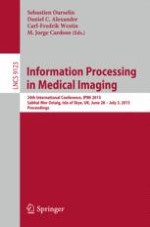2015 | OriginalPaper | Buchkapitel
Shape Classification Using Wasserstein Distance for Brain Morphometry Analysis
verfasst von : Zhengyu Su, Wei Zeng, Yalin Wang, Zhong-Lin Lu, Xianfeng Gu
Erschienen in: Information Processing in Medical Imaging
Aktivieren Sie unsere intelligente Suche, um passende Fachinhalte oder Patente zu finden.
Wählen Sie Textabschnitte aus um mit Künstlicher Intelligenz passenden Patente zu finden. powered by
Markieren Sie Textabschnitte, um KI-gestützt weitere passende Inhalte zu finden. powered by
